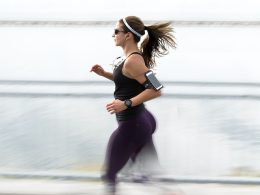Introduction: With summer’s scorching heat, exercising outdoors can be challenging and potentially dangerous if proper precautions are not taken. To ensure your safety and well-being while staying active in high temperatures, it’s crucial to follow some essential tips. This article provides you with valuable advice on how to exercise safely during the summer months. By implementing these recommendations, you can make the most of your workouts while minimizing the risks associated with exercising in hot weather.
- Stay Hydrated: One of the most critical aspects of exercising in high temperatures is maintaining proper hydration. Sweating in the heat causes increased fluid loss, which can lead to dehydration. Drink plenty of water before, during, and after your workout sessions to replenish the fluids your body loses. Avoid sugary or caffeinated beverages as they can contribute to dehydration. Aim to consume fluids at regular intervals and listen to your body’s thirst signals.
- Choose the Right Time: Plan your workouts during cooler times of the day, such as early morning or late evening when the temperatures are lower. Avoid exercising during the peak heat hours, typically between 10 a.m. and 4 p.m. By adjusting your workout schedule, you can reduce your exposure to extreme heat and minimize the risk of heat-related illnesses.
- Dress Appropriately: Wear lightweight, breathable, and moisture-wicking clothing that allows air circulation and helps sweat evaporate quickly. Opt for light-colored attire that reflects sunlight instead of absorbing it. Additionally, don’t forget to protect yourself from the sun’s harmful rays by wearing a wide-brimmed hat, sunglasses, and applying sunscreen with a high SPF.
- Modify Your Intensity: During hot weather, it’s crucial to adjust the intensity and duration of your workouts. High-intensity exercises can put excessive strain on your body in extreme temperatures. Instead, opt for moderate-intensity workouts or consider lower-impact activities such as swimming or cycling. Listen to your body and take breaks whenever needed.
- Seek Shade and Cool Areas: If possible, choose shaded areas or workout locations with access to air conditioning or fans. Exercising in direct sunlight can significantly increase your body’s heat absorption, leading to a higher risk of heat exhaustion or heatstroke. Look for parks with shaded paths, indoor gyms, or well-ventilated areas to keep yourself cool during workouts.
- Listen to Your Body: Pay attention to any signs of heat-related illness, such as dizziness, nausea, headache, rapid heartbeat, or muscle cramps. If you experience any of these symptoms, stop exercising immediately, find a cool place, and hydrate yourself. If the symptoms persist or worsen, seek medical assistance promptly.
- Gradually Acclimate: Give your body time to adjust to exercising in high temperatures. Start with shorter workouts and gradually increase the duration and intensity over time. This helps your body adapt to the heat more effectively and reduces the risk of overheating or exhaustion.
Conclusion: Exercising in high temperatures requires extra care to ensure your safety. By following these tips, you can minimize the risks associated with hot weather workouts. Remember to stay hydrated, choose the right time for your workouts, dress appropriately, modify intensity, seek shade, and listen to your body’s signals. With these precautions in place, you can continue to stay active and enjoy your summer workouts while safeguarding your well-being.












